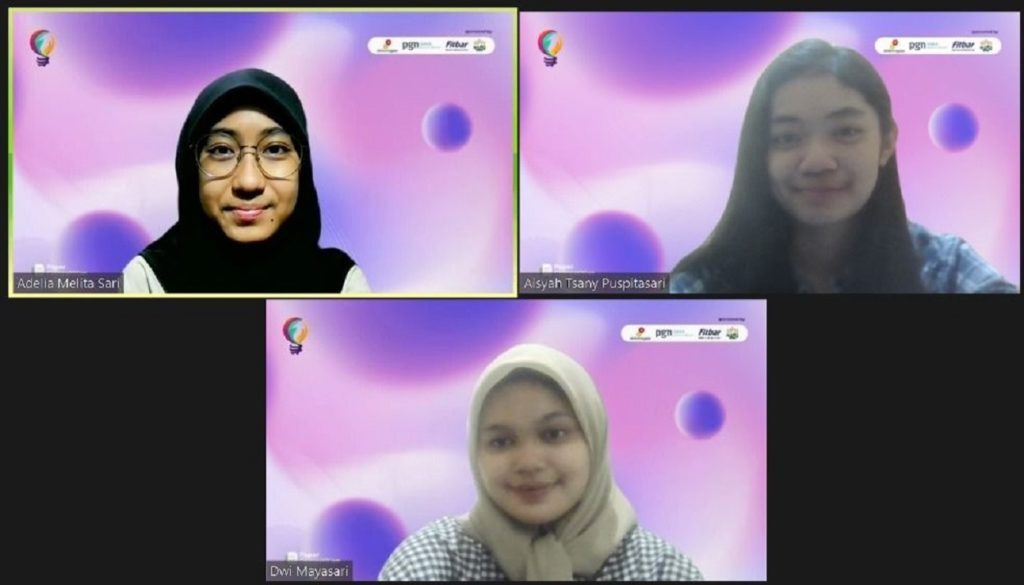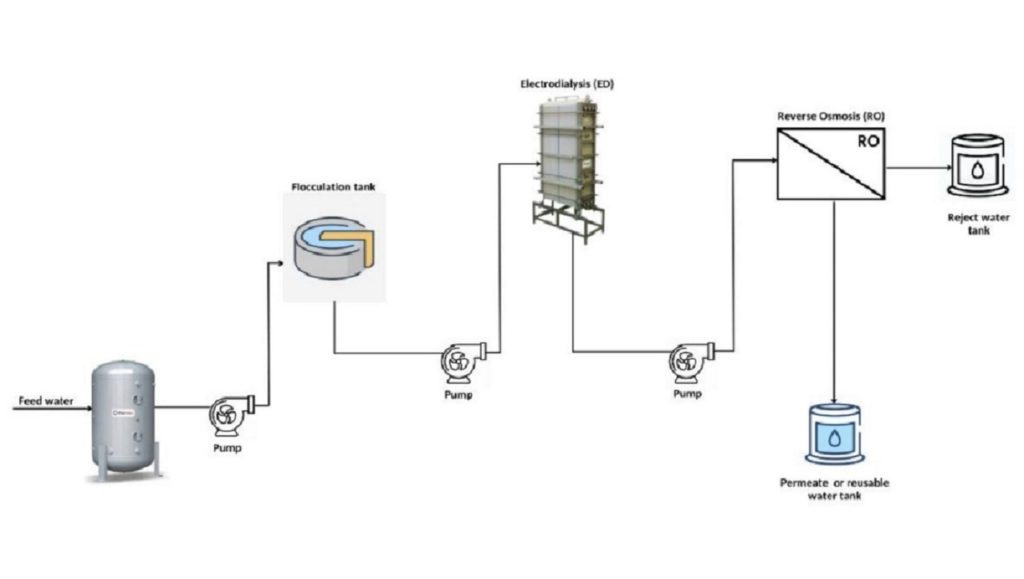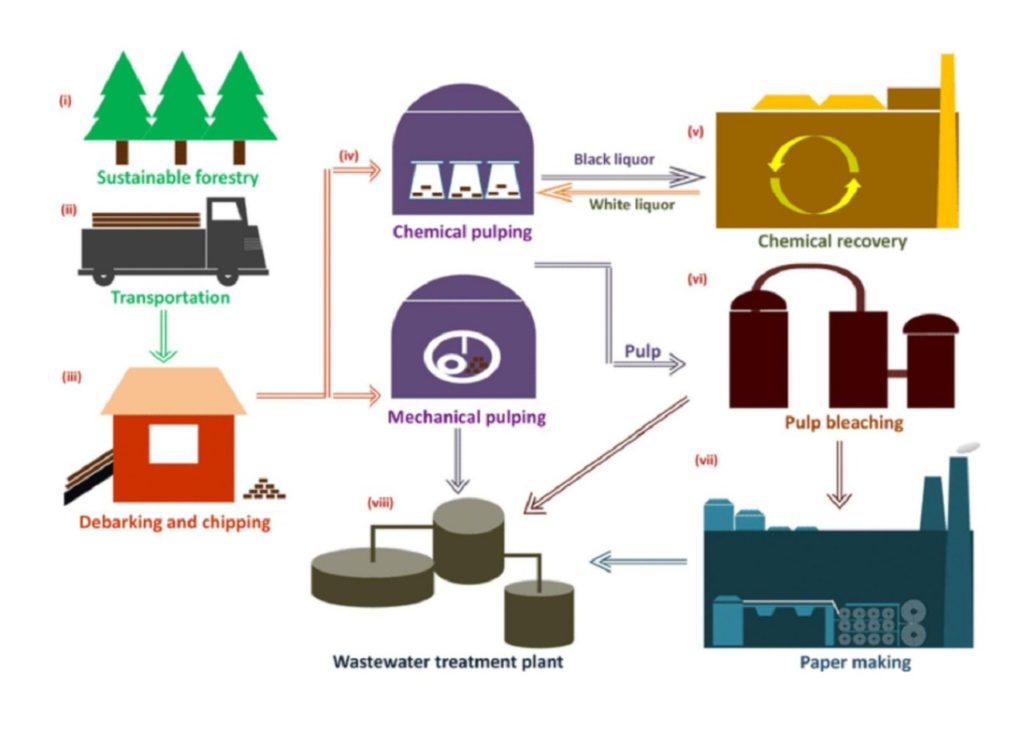ITS Students Initiate Solutions to Reduce Electrical Conductivity in Wastewater

(from top left) Adelia Melita Sari, Aisyah Tsany Puspitasari, and Dwi Mayasari from the ITS Winini Team came up with a solution to reduce electrical conductivity in wastewater from the pulp and paper industry
ITS Campus, ITS News —The pulp and paper industry requires a lot of water in production. Still, not a small amount of water produced is wasted because of its electrical conductivity. Departing from this problem, the Department of Chemical Engineering Institut Teknologi Sepuluh Nopember (ITS) student team initiated the use of a combined membrane that can reduce the electrical conductivity (conductivity) of wastewater by up to 99.7 percent.
Dwi Mayasari, Team Leader, said that most of the pulp and paper industries in Indonesia only use reverse osmosis (RO) membranes in the process of filtering water produced. “The water produced by this RO membrane has a high electrical conductivity, so it becomes waste and cannot be used anymore,” said the student who is familiarly called Maya.
For this reason, based on a literature study conducted by Maya and her team, they finally initiated using an additional membrane, namely electrodialysis (ED). ED itself is a membrane used to carry ions under the influence of an electric potential. ED membranes have several advantages, including high filter selectivity, low electrical resistance, and high chemical stability.

Illustration of the combined use of membranes to reduce electrical conductivity in water produced by pulp and paper, which was initiated by the ITS Winini Team
This 2021 student initially continued that the wastewater from pulp and paper products will be processed in a flocculation tank to remove the impurity particles. Then, the water will be pumped to the ED membrane, and only after that is, it pumped to the RO membrane. “It turns out that the combination of the two membranes can eliminate electrical and metal conductivity, so water can be reused in the production process,” said the girl from Sidoarjo.
Not only eliminating the level of electrical conductivity in water, Maya’s innovation with Adelia Melita Sari and Aisyah Tsany Puspitasari, who are members of the Winini Team, can also save water use in the pulp and paper industry so that it becomes more efficient. “It’s just that because it demands more complex technology, currently in Indonesia it has not been widely implemented,” he said.

Illustration of a paper-making process in an industry that produces wastewater with high electrical conductivity
However, thanks to this idea, the Winini Team, guided by the Orchidea lecturer Rachmaniah ST MT, won 2nd place in the competition. AIChE Indonesia Student Conference (AISC) Paper Competition 2022 was held last March. In this competition, Maya and her team faced problems in one of the pulp and paper industries in Indonesia.
Representing the Winini Team, Maya hopes that in the future, her innovative ideas can be applied in real terms in various pulp and paper industries in Indonesia. “After this, we also want to continue to develop innovations that can benefit the wider community,” She concluded excitedly. (ITS Public Relation)
Reporter: Fathia Rahmanisa
Related News
-
ITS Collaboration with BPBD East Java, Launching VR Disaster Simulation
ITS Campus, ITS News — Supporting anticipation of disasters and continuing to educate the public, Institut Teknologi Sepuluh Nopember
June 02, 2022 09:06 -
Supporting the Implementation of Innovative Ideas, ITS and IYSA Hold International Competition
ITS Campus, ITS News — Institut Teknologi Sepuluh Nopember (ITS) has once again proven its commitment to supporting the
June 02, 2022 09:06 -
ITS Maintains Informative Qualification for Five Consecutive Years at KIP Awards
ITS Campus, ITS News — Institut Teknologi Sepuluh Nopember (ITS) has once again successfully maintained its Informative Qualification predicate
June 02, 2022 09:06 -
ITS Strengthens Smart Eco-Campus through UI GreenMetric 2024
ITS Campus, ITS News — Institut Teknologi Sepuluh Nopember (ITS) has once again demonstrated its commitment to environmental concern
June 02, 2022 09:06
